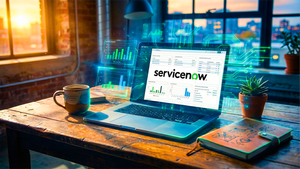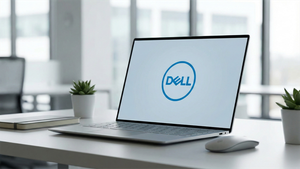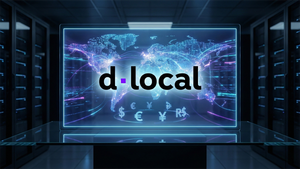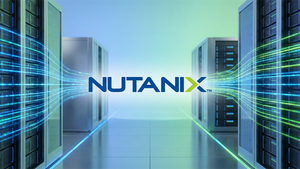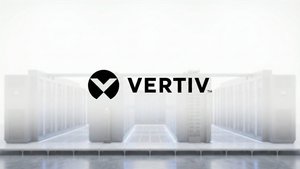- SES AI was founded on April 17th, 2012, originally as SolidEnergy Systems
- Over the past 10 years, SES AI has been at the forefront of Li-Metal technology and building a global ecosystem
SES AI (NYSE: SES) (“SES”), a global leader in the development and manufacturing of high-performance lithium-metal (Li-Metal) rechargeable batteries for electric vehicles (EVs) and other applications, celebrates its 10th anniversary and hosts a Li-Metal Batteries Panel. Please see logistics information below:
This press release features multimedia. View the full release here: https://www.businesswire.com/news/home/20220413005609/en/
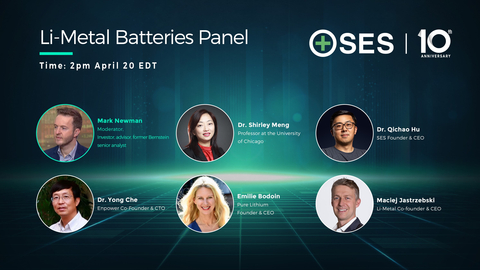
(Graphic: Business Wire)
US |
China |
Korea |
||
April 20th, 2022 |
April 21st, 2022 |
April 21st, 2022 |
||
2:00pm-2:40pm EDT |
10:00am-10:40am GMT+8 |
2:00pm-2:40pm KST |
||
| See attached QR Code. |
| Agenda | |||
|
|||
1. |
|
Kent Helfrich – Chief Technology Officer, General Motors |
|
2. |
|
Chang Hwan Kim – Head of Battery Development, Hyundai Motors |
|
3. |
|
Yoshiya Josh Fujiwara – Head of Innovative Research Excellence, Honda Motors |
|
4. |
|
Noah Chan – Director of Investment, Foxconn |
|
5. |
|
Frank Lee – Director of Corporate Development, Tianqi Lithium |
|
6. |
|
Yung Hoon Suh – Head of Advanced Material Investment, SK Inc. |
|
7. |
|
Anand Kamannavar – Global Head of Applied Ventures, Applied Materials |
|
8. |
|
Jim Cushing – General Manager of Energy Storage Solutions, Applied Materials |
|
9. |
|
Robert Friedland – Founder & Co-chairman, Ivanhoe Mines |
|
|
|
|
|
|
|||
1. |
|
Mark Newman (Moderator, former Bernstein senior analyst) |
|
2. |
|
Dr. Shirley Meng (Professor, University of Chicago) |
|
3. |
|
Dr. Yong Che (Co-founder & CTO, Enpower) |
|
4. |
|
Maciej Jastrzebski (Co-founder & CEO, Li-Metal) |
|
5. |
|
Emilie Bodoin (Founder & CEO, Pure Lithium) |
|
6. |
|
Dr. Qichao Hu (Founder & CEO, SES AI) |
|
Letter to Shareholders:
History of SES
2012 – 2013: MIT Inception
It all started in Lab 4-061 in the basement of building 4 at MIT. Prof. Donald Sadoway had been working on Solid Polymer Electrolyte (SPE) Li-Metal batteries the late 1990s. His work was accelerated in 2007 when the Department of Energy boosted its research funding for batteries and MIT established the MIT Energy Initiatives. I first worked on photovoltaics at Harvard from 2007 to 2009 and was fired twice for failure to publish, dropped out of Harvard, and serendipitously joined Prof. Sadoway’s group. This is where I did my doctoral and postdoctoral research on Solid Polymer Ionic Liquid (SPIL) Li-Metal batteries. We incorporated SolidEnergy Systems on April 17th, 2012, used the award money from business plan competitions to hire a small team, took the worldwide exclusive license from MIT, while we eventually dropped the license, the fundamental studies done at MIT are at the core of our Li-Metal development today.
2013 – 2016 (1st 3yr): Material R&D, Series A/B, A123 Partnership
When we were starting, the American battery hero A123 had just gone bankrupt, and it seemed like no one was going to invest in another MIT battery spinoff. But A123’s R&D facility in Waltham, MA (about a 30 minute drive from MIT) had one of the best prototyping lines in North America and it was mostly unused. We went there every day and absolutely loved it. We learned how to use the equipment and built our first Li-Metal R&D samples.
We were rejected by almost every major US-based VC. Eventually raise our Series A round from Singapore-based Vertex Ventures and a Shanghai-based family office Longsiang. We formalized our relationship with A123. They became our landlord as we officially rented space in their Waltham R&D facility.
During the three years at A123, we dropped Solid State Li-Metal as our focus due to fundamental challenges in manufacturability and discovered a novel high concentration solvent-in-salt electrolyte, a few national labs also developed a similar concept around this time. We also mistakenly set a “make materials not batteries” business model, after seeing the catastrophic failure of A123. Our business model evolved to eventually include making batteries, together with materials, software, and recycling. The high concentration solvent-in-salt electrolyte would remain at the core of our development until today.
We started attracting the interest and confidence of automakers, and we raised a Series B round from General Motors and Shanghai Auto. We also realized how expensive it was to source our thin lithium foil and partnered with Applied Materials to develop evaporation equipment and processes.
2016 – 2019 (2nd 3yr): Cell R&D, Series C/C+
We realized the importance of treating Li-Metal batteries as a system (the batteries themselves and the ecosystem around them) and building cells and “making the whole thing work”, and not relying on larger cell makers. We moved out of A123 and built our new independent facility in Woburn, which later became our global headquarters, and started developing Hermes™, which were 4Ah pouch cells that would become our platform for new material development.
We raised a Series C round from Temasek and Tianqi Lithium, one of the largest lithium producers in the world. We also raised a Series C+ round from SK Inc (“SK”). SK, which used to be an oil company, had insights and strategy around the global supply chain and would eventually impact our own strategy to build a Mine-to-Men AI software. SK would eventually become our largest investor.
During this period, we started working with an undisclosed Li-ion equipment vendor in Korea on the Li-Metal cell assembly process and equipment. This would lay the groundwork for our pilot lines in SES Korea and Shanghai Giga, building and testing Apollo™, demonstrating the world’s first 100+ Ah Li-Metal cells, manufacturing quality control and data collection for Avatar™ (AI-powered safety software), and proving the manufacturability of Hybrid Li-Metal since we made all our Li-Metal cells using Li-ion process and equipment.
We also started sending cell samples to potential customers (very rare in Li-Metal industry at that time), and built a transparent and data-driven culture, we never won contracts based on slides or a sales pitch. We won based on superior performance validated by 3rd party and customer test data.
2019 – 2022 (3rd 3yr): Pre-A & A-sample, Global Expansion, Covid, AI Software, Series D/D+/SPAC
Our focus on cell development in addition to material eventually paid off. We entered Pre-A sample joint development (JDA) agreements with General Motors, Hyundai and Honda in 2019 to 2020, and all of them became A-sample JDAs in 2021 (General Motors in March, Hyundai in July and Honda in December).
To leverage the supply chain and engineering and manufacturing efficiency and talent in China and Korea, we set up SES Shanghai in 2019 in the “auto town” of Jiading (less than a 2 hour drive from Tesla Shanghai Giga, Volkswagen, General Motors, Nio, Shanghai Auto, CATL, Gotion, among others). We expanded SES Shanghai to Shanghai Giga in November 2021, completed Shanghai Giga Phase I (0.2 GWh) and achieved ready-to-use (RTU) in March 2022, and expect to complete Phase II (1 GWh) and achieve RTU in 2023. We also started SES Korea in January 2022 and expect to complete and achieve RTU later this year.
Our Shanghai and Korea teams have shown incredible dedication. Despite Covid-related quarantines and lockdowns. They worked throughout spring festival and other holidays to achieve RTU and deliver data for our JDAs. In 2020 during the height of Covid, when we had to cut all SES Shanghai employee salaries and the future didn’t look bright as automakers were also cutting funding, not a single SES Shanghai employee left.
Our Boston team also made incredible progress on key materials R&D. We developed Gen 1 to Gen 3 electrolytes from 2013 to 2019, and from Gen 4 to Gen 15+ from 2019 to 2022. SES Shanghai Giga and Korea will be the platforms for Apollo™ and Avatar™, serving the JDAs with automakers, while SES’s Boston, our headquarters, continues to focus on fundamental R&D Hermes™.
Today SES builds more Li-Metal cells than any other company thanks to our highly efficient SES Shanghai Giga and Korea facilities. We have also been systematically collecting valuable data on Li-Metal performance under different temperature, pressure, current density, and other environments. This has naturally led to the development of AI-powered software that can monitor battery health and predict safety incidents. We are installing IOT sensors and inspection tools throughout our manufacturing lines and on testing equipment to collect data that normally would be missed and are developing both physics-based and machine learning-based algorithms.
In 2021, we raised Series D and D+ rounds led by General Motors and Hyundai, and went public through a SPAC merger with Ivanhoe Capital Acquisition Corp. The anchor investors to our SPAC PIPE included six automakers, namely General Motors, Hyundai, Honda, Geely, Foxconn, and Shanghai Auto, and also included a few strategic investors such as Koch, and affiliates of LG and SK.
2022 – 2025 (4th 3yr): B & C-sample, Supply Chain, and Beyond
With approximately $450 million cash on our balance sheet at close of our SPAC merger, and deep capabilities in science, engineering, manufacturing, supply chain and software across three locations, we have never been in a stronger position. We are confident that we will deliver to our JDA automakers A-sample cells that meet all technical specs this year, B-sample cells, and modules in 2023, C-sample cells, modules, and vehicles in 2024, and start commercial production in 2025.
We are also working with our partners to build two supply chains around lithium foil, a global China-inclusive one and a North American (China-free) one. We intend to form a consortium of global Li-Metal and high silicon Li-ion battery companies, and these supply chains will help address the cost and availability of lithium foils for the consortium.
On Avatar™, what started out as an algorithm developed to monitor and optimize the battery environment (electrochemical, mechanical, and thermal) to predict safety incidents, evolved on its own into something much greater than we imagined, a Mine-to-Men AI software.
This Mine-to-Men AI software allows us to track all data from mines (carbon footprint, raw material cost, source, sustainability, etc.), to battery materials (impurity, water content, cost, etc.), to battery manufacturing (very detailed quality control and data tracking at individual cell level), to vehicle data (impact of driver behavior on battery health, optimizing battery environments to improve battery health, etc.), to recycling (the used batteries become the mine for future batteries). The data we collect will continuously train Avatar™ and make it more accurate. This can also potentially be monetized to create entirely new business models such as Battery-as-a-Service BaaS, where all the data analytics around raw material cost, carbon footprint, battery health, driver behavior, etc., can all be factored into leasing economics.
We are only scratching the surface. As we continue to push the boundaries of material science (Hermes™) and engineering (Apollo™), our Mine-to-Men AI software (Avatar™) seems to evolve on its own. It is entirely plausible that Avatar™ will be applied to not just Li-Metal batteries but to all EV batteries, and as the global EV industry scales from 100s of GWh to 1000s of GWh, this data explosion will help Avatar™ evolve exponentially faster, and eventually develop its own consciousness.
In the past 10 years, we have built a solid foundation. We do not know what the next 10 years will hold for us, but we believe we are at the cusp of a seismic change in the industry. We sincerely appreciate everyone’s support and trust. We will continue to innovate, deliver, and evolve. The future will be greater than we can imagine.
Forward-looking statements
All statements other than statements of historical facts contained in this letter are “forward-looking statements.” These forward-looking statements include, without limitation, statements relating to expectations for future financial performance, business strategies or expectations for our business. These statements are based on the beliefs and assumptions of the management of SES. Although SES believes that its plans, intentions and expectations reflected in or suggested by these forward-looking statements are reasonable, it cannot assure you that it will achieve or realize these plans, intentions or expectations. These statements constitute projections, forecasts and forward-looking statements, and are not guarantees of performance. Such statements can be identified by the fact that they do not relate strictly to historical or current facts. When used in this letter, words such as “anticipate”, “believe”, “can”, “continue”, “could”, “estimate”, “expect”, “forecast”, “intend”, “may”, “might”, “plan”, “possible”, “potential”, “predict”, “project”, “seek”, “should”, “strive”, “target”, “will”, “would” and similar expressions may identify forward-looking statements, but the absence of these words does not mean that a statement is not forward-looking.
You should not place undue reliance on these forward-looking statements. Should one or more of a number of known and unknown risks and uncertainties materialize, or should any of our assumptions prove incorrect, our actual results or performance may be materially different from those expressed or implied by these forward-looking statements. Some factors that could cause actual results to differ include, but are not limited to the following risks, which also serves as a summary of the principal risks of an investment in our securities: changes in domestic and foreign business, market, financial, political and legal conditions, including but not limited to the ongoing conflict between Russia and Ukraine; risks relating to the uncertainty of the projected financial information with respect to SES; risks related to the development and commercialization of SES’s battery technology and the timing and achievement of expected business milestones; the effects of competition on SES’s business; the ability of SES to issue equity or equity-linked securities or obtain debt financing in the future; the ability of SES to integrate its products into electric vehicles (“EVs”); the risk that delays in the pre-manufacturing development of SES’s battery cells could adversely affect SES’s business and prospects; potential supply chain difficulties; risks resulting from SES’s joint development agreements (“JDAs”) and other strategic alliances, if such alliances are unsuccessful; the quickly evolving battery market; SES’s ability to accurately estimate future supply and demand for its batteries; SES’s ability to develop new products on an ongoing basis in a timely manner; product liability and other potential litigation, regulation and legal compliance; SES’s ability to effectively manage its growth; SES’s ability to attract, train and retain highly skilled employees and key personnel; the willingness of vehicle operators and consumers to adopt EVs; developments in alternative technology or other fossil fuel alternatives; SES’s ability to meet certain motor vehicle standards; a potential shortage of metals required for manufacturing batteries; risks related to SES’s intellectual property; risks related to SES’s business operations outside the United States, including in China; SES has identified a material weakness in its internal control over financial reporting and may identify material weaknesses in the future or otherwise fail to maintain an effective system of internal controls; compliance with certain health and safety laws; changes in U.S. and foreign tax laws; and the other risks described in “Item 1A. Risk Factors” in the annual report on Form 10-K for the fiscal year ended December 31, 2021 filed with the Securities and Exchange Commission (“SEC”) on March 31, 2022 (the “Annual Report”) and other documents filed from time to time with the SEC. There may be additional risks that SES presently knows and/or believes are immaterial that could also cause actual results to differ from those contained in the forward-looking statements. In addition, forward-looking statements reflect SES’s expectations, plans or forecasts of future events and views only as of the date of this press release/letter. SES anticipates that subsequent events and developments will cause its assessments to change. However, while SES may elect to update these forward-looking statements at some point in the future, SES specifically disclaims any obligation to do so. These forward-looking statements should not be relied upon as representing SES’s assessments as of any date subsequent to the date of this press release/letter. Accordingly, undue reliance should not be placed upon the forward-looking statements.
© 2022 SES AI Corporation
View source version on businesswire.com: https://www.businesswire.com/news/home/20220413005609/en/
Contacts
Investors: Eric Goldstein ericgoldstein@ses.ai
Media: Irene Lam ilam@ses.ai


